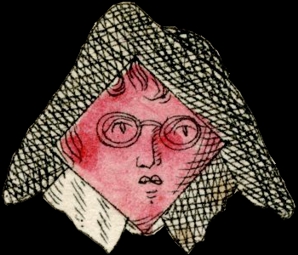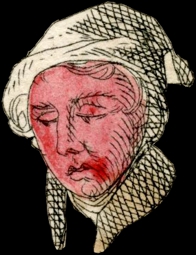 |
 |
|
|
This
deck was destined to be presented on this spot. It came with 4 other
decks in one "transformation" lot, which I had won in the last
Dominic Winter auction with decks from the Dudley Ollis collection. |
October 2025
 |
 |
|
|
This
deck was destined to be presented on this spot. It came with 4 other
decks in one "transformation" lot, which I had won in the last
Dominic Winter auction with decks from the Dudley Ollis collection. |
Nowadays I usually keep newly acquired decks for a couple of months or longer before I offer them for sale again. So when I write about them here, I still have the cards at hand. This time I'll have to use the scans I made before returning the deck to the UK and it feels a bit weird.
|
|
|
On the ace of clubs we find the name of the publisher: E. Olivatte. Also the date of the first publication: 1st of January 1828. There's no printer mentioned, but I doubt that the cards were printed by E. Olivatte as well. But there's a hint to Reynolds & Son. |
|
My
deck not only lacks the KC, but unfortunately it came without a box
too. |
|
The auction picture of the
box was shown with pictures of cards from the first edition. The text is
difficult to read, but Field helps by quoting "published as the Act
directs by E. Olivatte 6 Leigh St. Burton Crescent 1st January
1828". |
|
|
||
|
Still, I can't imagine that Reynolds would lend his name, if he wasn't involved in some way: printer? |
||
|
Besides
Albert Fields' Transformation Playing Cards (#15) and 2 auction sites as
a source, John Sings sent me a review of the deck by John Berry. Both
Field and Berry describe the deck as a pirate edition, copying all but
one designs from the Cotta decks of 1805 (11), 1806 (25) and 1807 (15).
Only the design of the 9 of Hearts is original. Still, the designs of
this deck are easily distinguished from the original Cotta designs.
Where in the Cotta decks the stipple technique was used for engraving,
in the Olivatte deck a line technique is used. |
||
|
|
|
So
I tend to agree with Albert Field in this matter and put the following to
you. It's
possible that the extra cards were discontinued in the 2nd edition and
replaced by an accompanying booklet. It would explain the absence of extra cards and the presence of King etc. in the Berry deck. But maybe there are collectors who have one or both editions, complete and with their boxes. |
|
extra card 1, Fields book |
extra card 2, auction site |
Your contribution here is welcome! |
|
The deck here is obviously a composed deck. The two present courts in the clubs suit don't have their rank printed in the design and are from the first edition. Mr. Field had the accompanying booklet, in which the Greek names are explained. He and Berry have made lists of the cards and which Cotta deck the designs were copied from. I will use the minimal descriptions of Field and per card indicate the year of the Cotta deck it was copied from. The king of clubs of this deck is missing, but I have replaced it here below with the original Cotta card. |
||
|
|
|
|
|
Agamemnon was a king of Greece and Clytemnestra was his wife. The Jack of Spades shows Egiste (Aegisthus), Clytemnestra's lover, who killed Agamemnon. |
||
|
|
|
|
|
Polyphemus is the one-eyed giant blinded by Ulysses. Penelope was queen of Ithaca and wife of Ulysses and he was the Greek leader in the Trojan war. |
||
|
|
|
|
|
In the Olivatte deck the King of Clubs is named Menelaus, king of Sparta and brother of Agamemnon. Helen was the wife of Menelaus, but she eloped with Paris. Aeneas is the Trojan hero who escaped from Troy. |
||
|
|
|
|
|
Priamus was king of Troy and Hecuba was queen of Troy. Homer was the author of the Iliad and the Odyssey. |
||
PS
 |
| All the backs were blank, but two have been used in an attempt to sell a silver watch. Secondary use! |